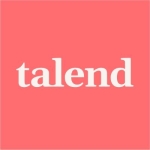What is our primary use case?
We use Azure Data Factory for data transformation, normalization, bulk uploads, data stores, and other ETL-related tasks.
How has it helped my organization?
Azure Data Factory allows us to create data analytic stores in a secure manner, run machine learning on our data, and easily adapt to changing schema.
What is most valuable?
The most valuable feature of Azure Data Factory is that it has a good combination of flexibility, fine-tuning, automation, and good monitoring.
What needs improvement?
The documentation could be improved. They require more detailed error reporting, data normalization tools, easier connectivity to other services, more data services, and greater compatibility with other commonly used schemas.
I would like to see a better understanding of other common schemas, as well as a simplification of some of the more complex data normalization and standardization issues.
It would be helpful to have visibility, or better debugging, and see parts of the process as they cycle through, to get a better sense of what is and isn't working.
It's essentially just a black box. There is some monitoring that can be done, but when something goes wrong, even simple fixes are difficult to troubleshoot.
For how long have I used the solution?
I have been working with Azure Data Factory for a couple of years.
There is only one version.
What do I think about the stability of the solution?
Overall, I believe the stability has been good, but there have been a couple of occasions when Microsoft's resources needed to be allocated were overburdened, and we had to wait for unacceptable amounts of time to get our slot. It has now happened twice which is not ideal.
What do I think about the scalability of the solution?
There is no limit to scalability.
We only have a few users. One is a data scientist, and the other is a data analyst.
We use it to push up various dashboards and reports, it's a transitional product for transferring, transforming, and transitioning data.
It is extensively used, and we intend to expand our use.
How are customer service and support?
You don't really get that kind of support; it's more about documentation and the community support that is available. I would rate it a three out of five compared to others.
You could call them, and pay for their consulting hours directly, but for the most part, we try to figure it out or look through documentation.
I think their documentation is lagging because it's not as popular of a tool, there's just not a lot, or as much to fall back on.
How would you rate customer service and support?
Which solution did I use previously and why did I switch?
We had only our own tools, and we switched because you get to leverage all of the work done in a SaaS or platform as a service, or however they classify it. As a result, you get more functionality, faster, for less money.
How was the initial setup?
The initial setup is straightforward.
It is a working tool. You can start using it within an hour and then make changes as needed.
We only need one person to maintain the solution; it doesn't take much to keep it running.
It's not a problem; it's a platform.
What about the implementation team?
We completed the deployment ourselves.
What was our ROI?
We have seen a return on investment. I can't really share many details, but for us, this becomes something that we sell back to our clients.
What's my experience with pricing, setup cost, and licensing?
You pay based on your workload. Depending on how much data you process through it, the cost could range from a few hundred dollars to tens of thousands of dollars.
Pricing is comparable, it's somewhere in the middle.
There are no additional fees to the standard licensing fee.
Which other solutions did I evaluate?
We looked at some other tools, such as Databricks, AmazonGlue, and MuleSoft.
We already had most of our infrastructure connected to Azure in some way. So the integration of where our data resided appeared to be simpler and safer.
What other advice do I have?
I believe it would be beneficial if they could find someone experienced in some of the tools that are a part of this, such as Spark, not necessarily Data Factory specifically, but some of those other tools that will be very familiar and have a very quick time for productivity. If you're used to doing things in a different way, it may take some time because there isn't as much documentation and community support as there is for some more popular tools.
I would rate Azure Data Factory a seven out of ten.
Which deployment model are you using for this solution?
Public Cloud
If public cloud, private cloud, or hybrid cloud, which cloud provider do you use?
Microsoft Azure
Disclosure: My company does not have a business relationship with this vendor other than being a customer.





















